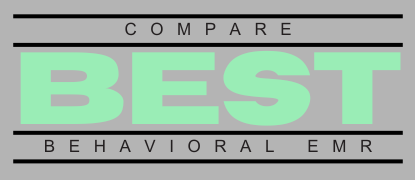Switching behavioral health EMR systems is a major decision that can significantly impact your practice. While the right electronic medical record (EMR) software boosts efficiency, improves patient care, and supports better clinical outcomes, the process of transitioning can feel daunting. Many practice owners fear disruptions that could negatively affect patient care or administrative workflow. But with proper planning and strategy, switching your behavioral health EMR can be smooth and stress-free.
This guide shares practical steps to ensure your EMR transition is seamless, causes minimal disruption, and helps you elevate your practice to new heights.
Signs it’s Time to Consider Switching Behavioral Health EMR
Before diving into how to switch your behavioral health EMR, let’s first confirm whether your practice truly needs a change. Consider these common signs:
- Limited functionality: Your current EMR doesn’t offer key capabilities specific to behavioral health, such as integrated telehealth, advanced documentation tools, or customizable reporting.
- Difficult user interface: Clinicians and staff struggle with a complex, outdated, or unintuitive system, leading to frustration and inefficiency.
- Rising costs without added value: You notice increasing fees without notable improvements in service, support, or features.
- Poor interoperability: Your system struggles to integrate with other technologies or lacks compatibility with important partners, such as labs, pharmacies, or billing services.
If one or more of these resonate with you, it’s likely time to consider switching your behavioral health EMR.
5 Steps to Ensure a Smooth EMR Transition
1. Clearly Define Your Practice’s EMR Needs
To select the ideal EMR, clearly outline your practice’s specific needs by involving your full team:
- Identify essential features (e.g., telehealth integration, e-prescribing, customizable clinical documentation tools).
- Assess administrative and billing workflows to pinpoint areas where your current system is lacking.
- Consider scalability and future growth.
Creating a detailed wish list will guide your decision-making process and ensure you select an EMR tailored to your unique behavioral health practice.
2. Involve Key Staff Members Early
Successful EMR transitions involve input from a variety of perspectives:
- Gather feedback from clinicians, front-desk staff, billing specialists, and practice managers.
- Create an internal EMR task force that meets regularly to discuss goals, concerns, and progress.
Early involvement helps build buy-in and reduces resistance later, contributing to easier adoption and smoother change management.
3. Choose the Right Behavioral Health EMR Vendor
Selecting the ideal vendor is crucial. Evaluate suppliers using the following criteria:
- Behavioral Health Specialization: Choose a vendor that understands the specific needs of mental health and substance use disorder practices.
- Customer Support Quality: Ensure access to dedicated support staff familiar with behavioral health workflows.
- Implementation & Training: Confirm that robust training and onboarding resources are available.
- Interoperability and Integration: Verify ease of integration with your existing tools, labs, pharmacies, and billing systems.
Need help comparing vendors? Take advantage of a free practice analysis to match your specific needs with the best EMR options.
4. Plan and Execute Data Migration Carefully
Data migration is often considered the most challenging step. To ensure accuracy and minimal disruption:
- Work closely with your new EMR vendor to map out migration timelines and responsibilities.
- Conduct thorough backups of your current EMR data prior to migration.
- Schedule migration during periods of low clinical activity to minimize patient care disruptions.
- Conduct rigorous testing before fully launching to ensure accuracy and completeness of patient records.
Remember, effective data migration ensures continuity of care and prevents critical data loss, safeguarding patient safety and practice reputation.
5. Provide Comprehensive Staff Training and Support
A well-trained team is essential for a smooth transition:
- Take advantage of vendor-provided training sessions and resources.
- Offer multiple training opportunities—online modules, webinars, hands-on sessions—to accommodate different learning styles.
- Establish “EMR champions” within your practice who can provide peer support and guidance during the transition.
Common Pitfalls to Avoid When Switching Behavioral Health EMR
Awareness of common pitfalls helps you avoid unnecessary disruptions:
- Not involving your team early: Failing to include key staff in the decision-making process can lead to resistance and poor adoption.
- Underestimating data migration complexity: Insufficient planning or rushed migration often results in data errors, delays, and patient care disruptions.
- Choosing based solely on price: The lowest-cost EMR may lack essential behavioral health features, training, or support, ultimately costing more in lost productivity and frustration.
Conclusion: Switch with Confidence and Minimal Disruption
Switching your behavioral health EMR doesn’t have to mean sacrificing patient care quality or practice efficiency. With careful planning, thoughtful vendor selection, and proactive involvement from your team, you can seamlessly transition to a new EMR that elevates your practice.
Ready to explore the best EMR solutions for your unique needs? Start today with a free practice analysis, and let our experts guide you toward the ideal behavioral health EMR solution.
Additional Resources:
- Read more about Benefits of Integrated Telehealth in Behavioral Health EMR.
- Explore our guide on Top 5 Features to Look for in Your Next Behavioral Health EHR.
- Learn about EMR interoperability standards from the Office of the National Coordinator for Health Information Technology (ONC).
Meta Description:
Considering switching behavioral health EMR? Learn how to transition smoothly, avoid common pitfalls, and ensure minimal disruption to patient care.
